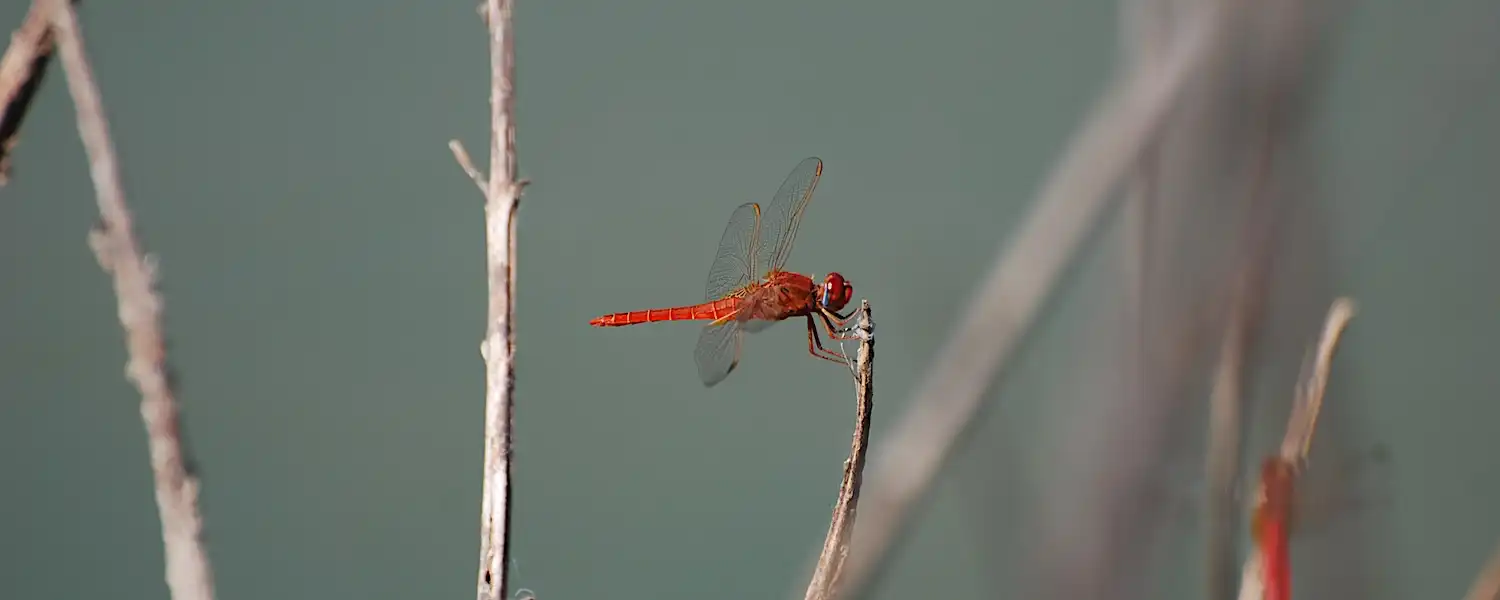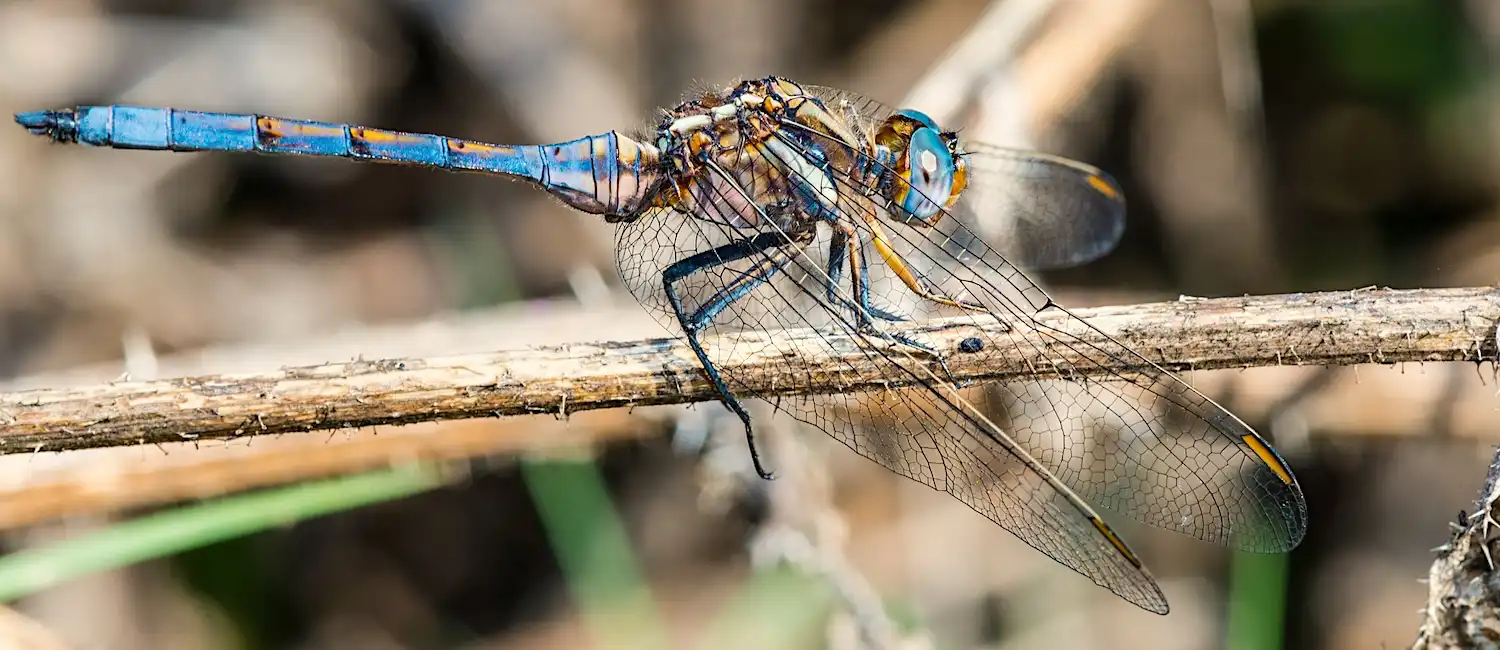The Gambia boasts an array of dragonfly species that reflect the vibrant ecology of the region. Dragonflies, belonging to the order Odonata, are split into two suborders: the Anisoptera (true dragonflies) and the Zygoptera (damselflies). In The Gambia, several dragonfly species can be observed, each with unique characteristics and ecological niches.
Libellulidae Family:
**Brachythemis impartita (Northern Banded Groundling)**
Found commonly near still and slow-moving waters, the Northern Banded Groundling can be identified by its stout body and clear wings with black patches near the tips. Males often display a distinctive black and yellow banding on the tail, while females exhibit a more muted colouration to blend into their surroundings better. Their presence near water bodies highlights their role in controlling mosquito populations, as their nymphs are voracious predators of mosquito larvae.
**Crocothemis erythraea (Broad Scarlet)**

Also known as the Scarlet Darter, this dragonfly is easily distinguishable by its bright red colour in males and yellow-brown in females. Broad Scarlets are typically found in stagnant waters or slow-moving streams. They display aggressive territorial behaviour, often chasing off other dragonflies to defend their breeding grounds. Their bold colouration and robust flight make them conspicuous inhabitants of their habitats.
Aeshnidae Family:
**Anax imperator (Emperor Dragonfly)**

The Emperor Dragonfly is one of The Gambia’s most impressive and largest dragonflies. Known for its distinctive green thorax and blue abdomen, it is a powerful flier, often patrolling large territories. They breed in a variety of aquatic environments but display a preference for ponds, lakes, and slow-moving rivers. The larvae are equally formidable, growing to large sizes and preying on a variety of aquatic organisms. Source Wikipedia
Coenagrionidae Family:
**Ischnura senegalensis (Senegal Golden Dartlet)**
Among the damselflies, the Senegal Golden Dartlet is notable for its small size and delicate appearance. Males typically have an azure-coloured abdomen with fine black rings, while females can exhibit a wide variety of colours such as green, brown, or orange. They are commonly found in rice paddies, marshes, and vegetated ponds where they often lay eggs on floating plant matter.
Ecological Importance and Conservation:
Dragonflies in The Gambia, like those worldwide, are key indicators of environmental health, especially of aquatic ecosystems. Their dependence on clean water bodies for their larval stages means their presence or absence can signal changes in water quality, pollution levels, and habitat health. As predators, dragonflies help control insect populations, particularly mosquitoes, thereby contributing to human health by reducing the incidence of insect-borne diseases.
Conservation efforts in The Gambia should focus on preserving and restoring aquatic habitats. This includes protecting wetlands, rivers, and streams from pollution and habitat degradation caused by agricultural runoff, unregulated development, and deforestation. Additionally, educating local communities about the ecological roles and benefits of dragonflies can foster community-led conservation initiatives.
Cultural Significance and Observation:
For enthusiasts and researchers in The Gambia, the best times to observe and photograph are during warm, sunny periods, typically from late morning to mid-afternoon, when they are most active. Identifying different species can be an exciting challenge, given their diverse colours, sizes, and behaviours.
Conclusion:
From the boldly coloured Northern Banded Groundling and Scarlet Darter to the majestic Emperor, each species brings a unique element to the natural environment. Their presence serves as a reminder of the delicate balance within ecosystems and the importance of conserving natural habitats. By appreciating and protecting these remarkable insects, The Gambia continues to uphold its natural heritage and ecological health.
